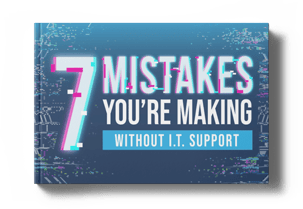Finding the Right Information Technology Support in San Francisco
Tips for Finding the Right Information Technology Support in San Francisco In today’s day and age, businesses looking for information technology...
Work from home is currently the buzz-worthy word behind tech conversation. And with the advent of the novel coronavirus pandemic, you’re bound to hear it more often. It’s not a new concept and has been widely used in the freelance job market. Although it’s more commonly referred to as telecommuting.
In essence, WFH is a simple concept. However, many companies are finding it hard to adapt to such an environment. Currently, many employees working from home need to be there for their most vulnerable relatives. Schools and day-care facilities are also closed.
This means that such employees face loads of distractions that may hamper their focus and significantly drain their productivity. They also find it increasingly difficult to collaborate with their co-workers as they would in a regular office environment.
Therefore, your company needs to formulate an effective WFH policy that will address such challenges.

A WFH policy is a raft of measures that clearly outline the responsibilities and expectations that your company has for employees that work from their homes. Or anywhere else outside your offices. Organizations have different approaches, but here are some of the basic requirements and stipulations:
This list is endless and depends on the nature and setup of your business structure. Employees that have been working for long and have shown an ability to meet their targets are prime candidates.
However, with the current pandemic, such a scheme has become mandatory from most industries outside healthcare, the services industry, and other essential services. So, it makes sense to at least try and get it right to avoid any shortfalls in productivity or revenues.
Even the most well-intentioned WFH policies run the risk of failing. Your company faces the need to design and test such measures before rolling them out. Otherwise, when something goes wrong, your employees may blame it on the policy. You won’t even have a way to tell if it failed or it’s your employees’ shortcomings at play.
Accounting for the following considerations will ease your employees as they transcend from the office to a WFH environment:
Criteria for Evaluating Jobs Eligible for WFH
The first step to an effective roll-out is determining which jobs can be done from the comfort home. Please note that we imply “jobs” and not specific employees. There’s a huge disparity between the 2.
Some jobs may be too complicated or may require equipment that’s not tenable for the WFH environment. With a little planning and foresight, other tasks can shift to employees’ homes. At the same time, other jobs require very little investment or incentive and are suitable for such a scheme.
Which Staff Members Can Be Productive While at Home
Once you establish what jobs can be performed from home either on a full-time or part-time basics. Then It’s time to decide which of your employees will thrive by adopting WFH. One baseline that can determine an employee’s eligibility is a displayed commitment to their job and sustained productivity.
One commonly used criteria are employees that have completed their probation period or have given your company years of quality service. For instance, an employee that has completed three months of probation and hit at least 80% of their targeted goals can work from home.
However, with this current pandemic, WFH may be mandatory for your industry.
Incrementally Roll Outs
Moving your workforce to a WFH environment may have a significant impact on your cooperate culture. It may also affect your management structure and core business processes. Doing all of it at once may open the proverbial Pandora’s Box. Every project in your enterprise needs thorough vetting and testing.
This gives you a chance to iron out the kinks and eliminate all the bugs. WFH is not exempt from such a rule. You can try it out on a few employees, departments or a select team. Then you can adopt the policies in other departments.
Such small increments allow you to effectively review your WFH policy, Identify potential pitfalls, and apply the necessary fixes.
Your Company’s Set of Employee Expectations
The next step is outlining what your company expects from its remote staff. Here are a few policies worth considering.
An Effective Cancelation or Rollback Plan
If the WFH policy fails, your employees will need some time to sort out their lives before shifting back to an office environment.
There’s very little room for improvisation when it comes to your core business asset. And that’s your workforce. Therefore, any WFH policies you seek to implement must center on their needs. Your enterprise also needs to factor in the distraction that makes working from home more challenging.
It’s also wise to make scalable WFH measures. So, they can meet your business outflows and real-world events - Case in point the current pandemic. Fortunately, the push for more WFH solutions started over two years ago, so the market is flooded with hardware and software solutions.
At On-Time Tech, we’ve been at the forefront of providing such solutions to companies of various scales in San Francisco and elsewhere. Feel free to contact us, and we’ll help your company formulate effective WFH policies. We can also help you find the right equipment focusing on your ROI and core business goals.
Click here to get started, or call us at (415) 294-5250.

Tips for Finding the Right Information Technology Support in San Francisco In today’s day and age, businesses looking for information technology...
Defining The San Francisco Modern Workplace If you are searching about the modern workplace, you could be curious to know how it can transform your...
Nonprofit IT Services In San Francisco & Los Angeles The nonprofit industry is constantly growing in San Francisco and the Los Angeles area. As needs...

On Time Tech is an IT Support and Computer Services company serving California. We provide services to the areas in and around We know businesses like yours need technology support in order to run highly-effective organizations. Leverage pro-growth technology services for your company now.
San Francisco:
182 Howard St.
Suite 108
San Francisco, CA 94105
Los Angeles:
8350 Rex Road
Pico Rivera, CA 90660
Business Hours:
M-F: 8AM-9PM
© 2024 On Time Tech